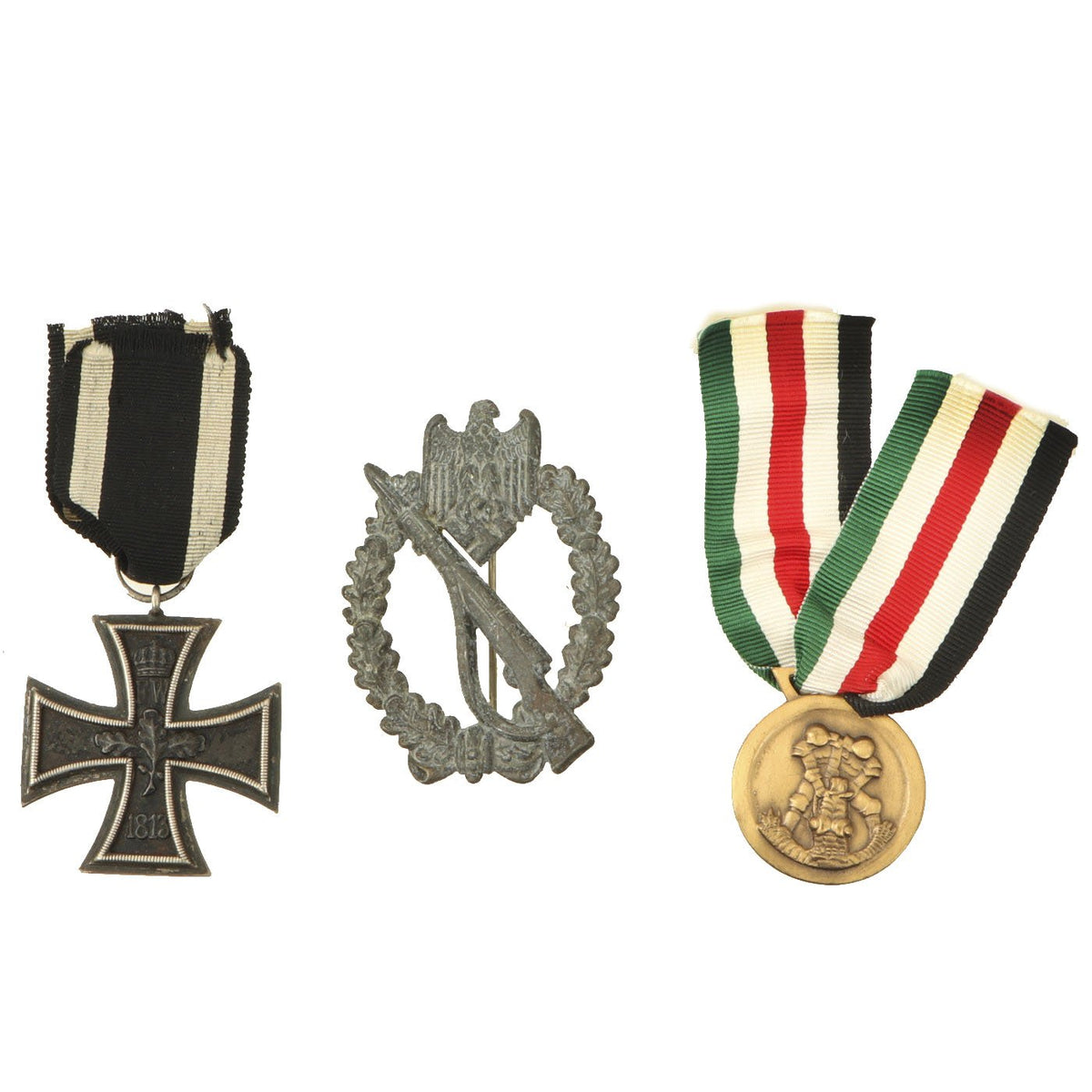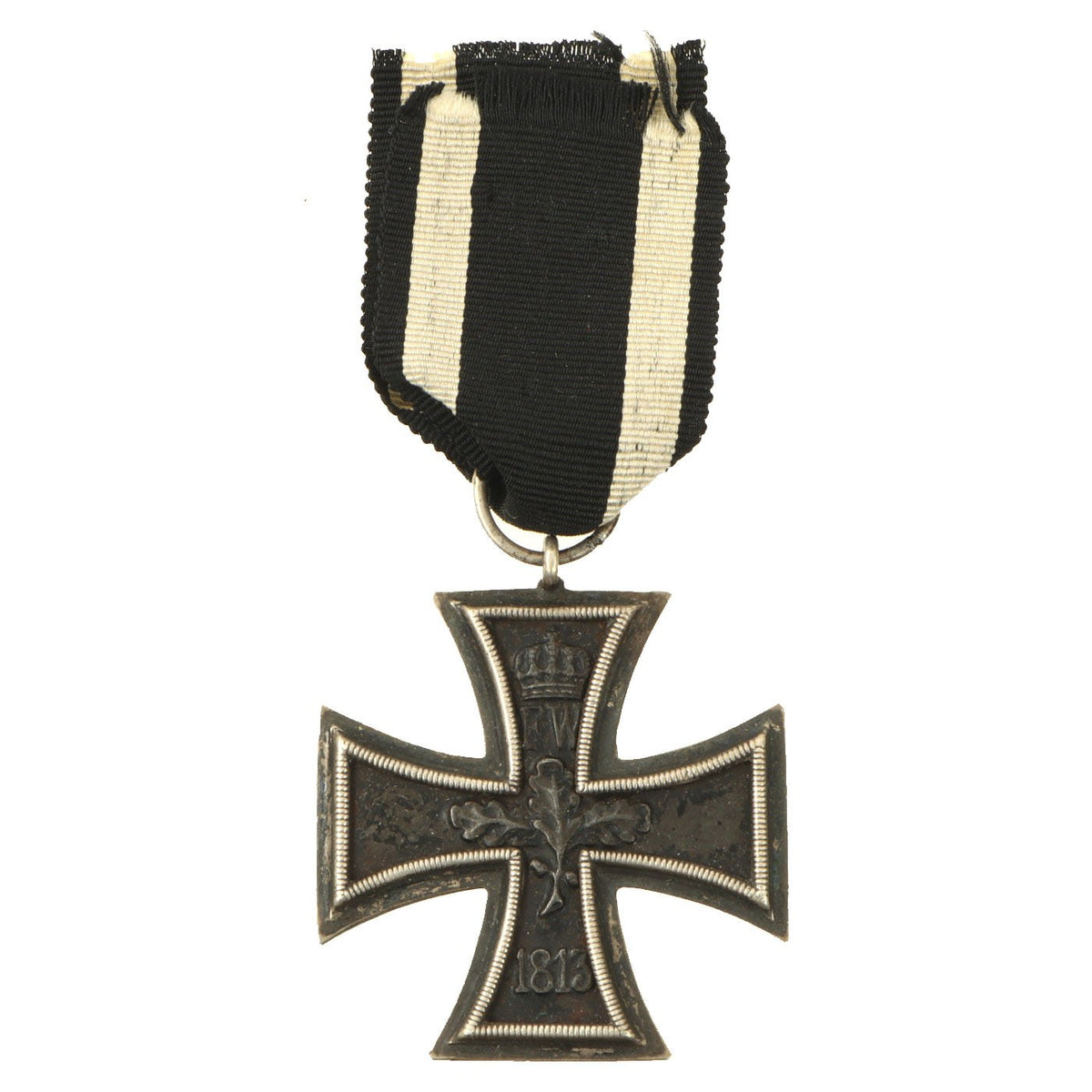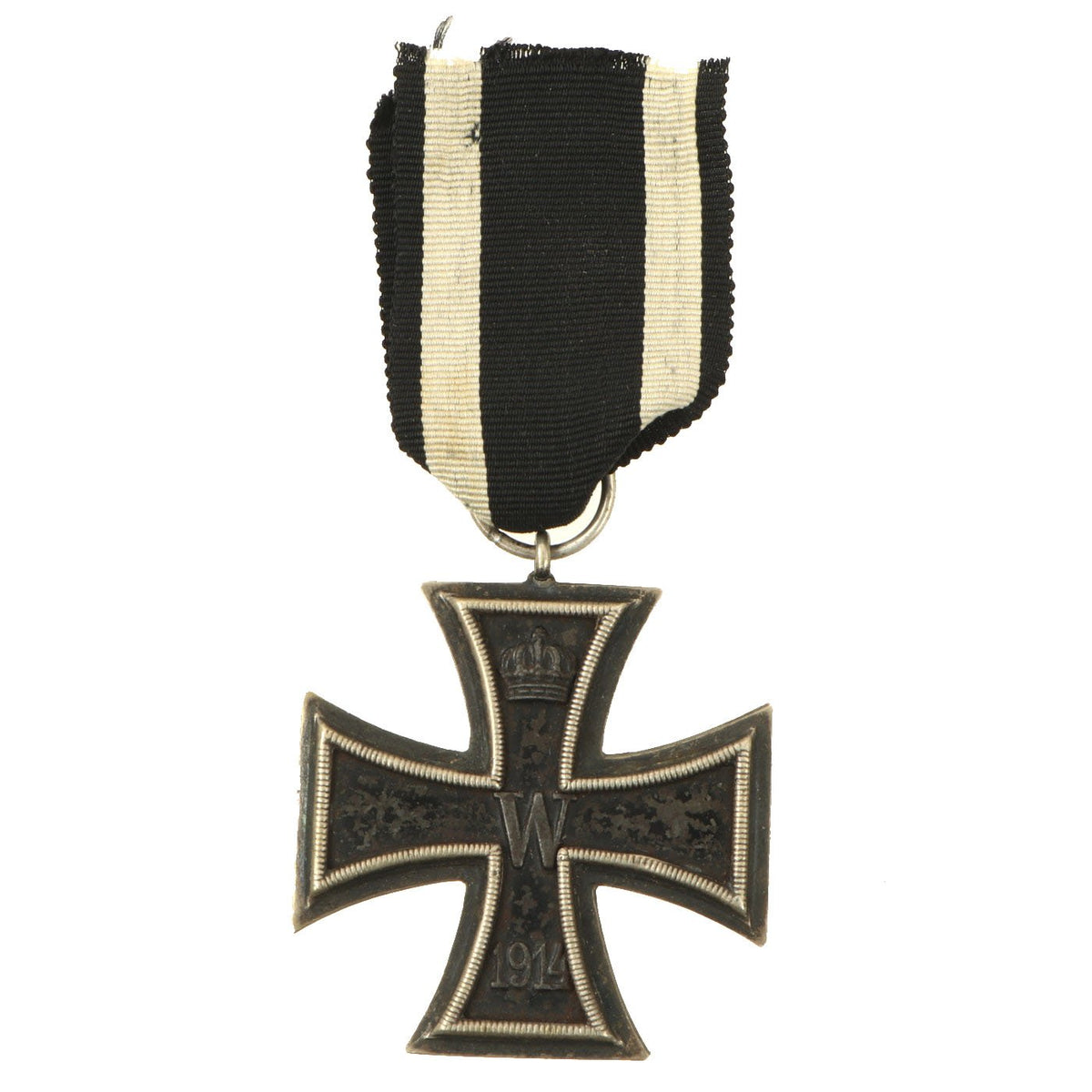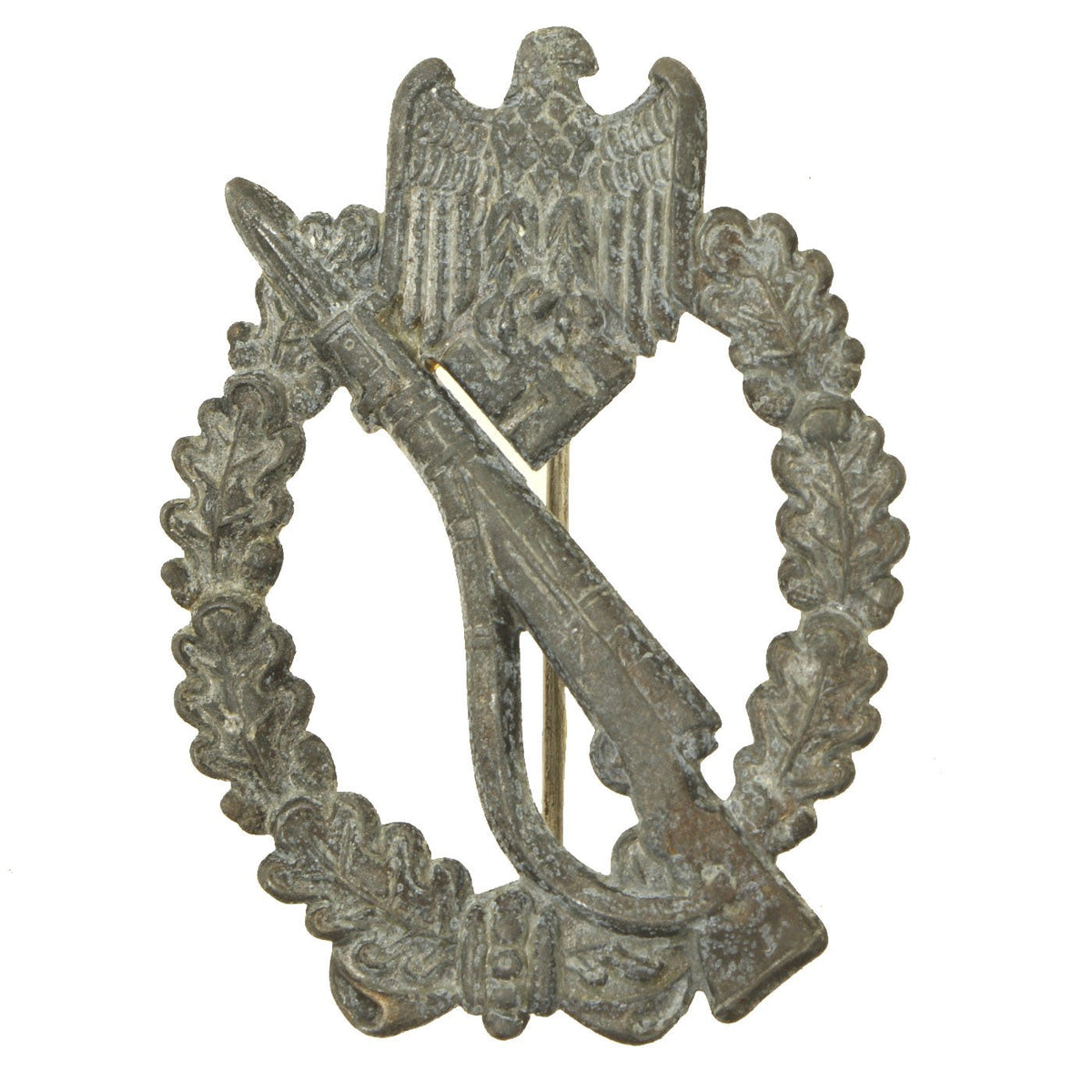Original German WWI & WWII Medal Grouping – 1914 EK II, Infantry Assault Badge & Italian-German Africa Medal Original Items
$ 295,00 $ 118,00
Original Items: Only One Set Available. This is a very nice collection of German WWII Insignia, which was brought back by a USGI after the war was concluded. It is made up of three awards, one from the First World War, and one from the WWII Africa campaign.
This lovely set includes:
– One Imperial German WWI Prussian Iron Cross 2nd Class 1914 (Eisernes Kreuz II. Klasse 1914) with Ribbon. This fine example is in very good condition, though a lot of the paint on the central cross is missing on both sides.
– One German WWII Silver Grade Infantry Assault Badge. This is in very good condition, with an intact functional pinback. Most of the silvering has worn away or oxidized, showing much of underlying zinc alloy.
– One Italian-German WWII African Campaign Medal with Ribbon and Pin. This is in very good condition, with the bronze wash still fully intact, and a great condition ribbon. This looks to be an unissued example.
A wonderful totally genuine grouping perfect for anyone just getting started out in collecting German WWI & WWII Medals.
German WWI Prussian Iron Cross 2nd Class with Ribbon:
Established by Frederick William in 1813 for gallantry in action, the decoration was revived several times for later conflicts. The bulk of the issues are divided into 1st and 2nd class versions, but a rare and superior ‘Grand Cross’ was also awarded for successful field commanders. During WW1 the lower decoration was freely awarded with 5½ million second class types issued. Originally, the Iron Cross was an award of the Kingdom of Prussia, however given Prussia’s pre-eminent place in the German Empire formed in 1871, it became an award for all of Germany.
The basic design of the WW1 crosses is a central Tatzenkreuz (cross pattée) struck from iron and mounted in a silver frame which has a raised crenulated decorative border. The obverse of the cross bears the date 1914 under a crowned ‘W’ monogram. Reverse bears an oak leaf cluster with the date of the decoration’s institution, 1813 underneath – the crowned initials of Frederick William are in the top arm above the oak leaf cluster. Suspension for second-class types is by means of a ring, and frequently this ring bears a maker’s stamp.
Please examine the edge seam for authentication, which is not present on reproductions. Iron crosses were commonly constructed from an iron core sandwiched in a surrounding two part silver frame, normally the seam of these two silver parts is visible around the edge of the cross as is seen on this fine example.
The Infantry Assault Badge (Infanterie-Sturmabzeichen) was a German war badge awarded to Waffen-SS and Wehrmacht Heer soldiers during the Second World War. This decoration was instituted on 20 December 1939 by the Commander-in-Chief of the German Army, Generalfeldmarschall Walther von Brauchitsch. It could be awarded to members of non-motorized Infantry units and units of the Gebirgsjäger that had participated in infantry assaults, with light infantry weapons, on at least three separate days of battle in the front line on or after 1 January 1940. When a counter offensive led to fighting, it could also apply. Award of the Infantry Assault Badge was authorized at regimental command level.
Italian-German WWII African Campaign Medal
Awarded to soldiers of the Wehrmacht and Italian troops who worked together in the North African theater of war. The round award is constructed out of a die struck tombak base that has been bronze washed. The obverse of the award features two gladiators fighting together to keep a crocodiles jaws closed. Beside the gladiators it is written “Lorioli Milano” (manufacturing company and location) below them it is written “De Marchis” (the designer of the award). The reverse features the Arch of Fileni, above the Savoy knot and inside of a fasces (left) and a static swas (right), which is all surrounded by “Campagna Italo Tedesca in Africa – Italienisch Deutscher Feldzug in Afrika” (Medal for the Italian-German campaign in Africa (in both German and Italian)). Attached to the award is 3 inches of black, white, red and green rayon ribbon. Shows period wear and the ribbon is well worn. The award features a quality tombak base, wonderful detail and symbolism!
Fast Shipping with Professional Packaging
Thanks to our longstanding association with UPS FedEx DHL, and other major international carriers, we are able to provide a range of shipping options. Our warehouse staff is expertly trained and will wrap your products according to our exact and precise specifications. Prior to shipping, your goods will be thoroughly examined and securely secured. We ship to thousands clients each day across multiple countries. This shows how we're dedicated to be the largest retailer on the internet. Warehouses and distribution centres can be located throughout Europe as well as the USA.
Note: Orders with more than one item will be assigned a processing date depending on the item.
Before shipping before shipping, we'll conduct a thorough inspection of the items you have ordered. Today, the majority of orders will be delivered within 48 hours. The delivery time will be between 3-7 days.
Returns
The stock is dynamic and we cannot completely manage it because multiple stakeholders are involved, including our factory and warehouse. So the actual stock may alter at any time. It's possible that you may not receive your order once the order has been made.
Our policy is valid for a period of 30 days. If you don't receive the product within 30 days, we are not able to issue a refund or an exchange.
You can only return an item if it is unused and in the same state as the day you received it. You must have the item in its original packaging.
Related products
Uncategorized
Uncategorized
Uncategorized
Uncategorized
Uncategorized
Uncategorized
Uncategorized
Uncategorized
Uncategorized
Armoured Fighting Vehicles of the World: AFVs of World War One (Hardcover Book) New Made Items
Uncategorized
Uncategorized
Uncategorized
Uncategorized
Band of Brothers ORIGINAL GERMAN WWII Le. F.H. 18 10.5cm ARTILLERY PIECE Original Items
Uncategorized
Uncategorized
Uncategorized
Uncategorized
Uncategorized
Uncategorized
Angolan Rebel 1970s era 60mm Inert Display Mortar from Angolan Civil War Original Items












































































